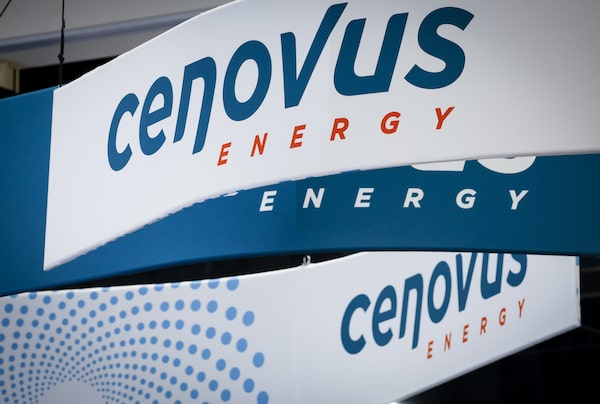
The AER has demanded that Cenovus immediately contain a diesel leak in the northwest corner of Alberta and prevent any further release or migration into the environment.Jeff McIntosh/The Canadian Press
Cenovus Energy Inc. has been slapped with a non-compliance order in Alberta after more than 1,000 litres of diesel spilled into a popular fishing lake and the surrounding area.
The Calgary-based oil producer’s spill came from a temporary diesel-powered generator that it was operating in the northwest corner of Alberta, about 140 kilometres west of High Level, according to the Alberta Energy Regulator (AER) order issued last week. The AER demands that Cenovus immediately contain the diesel and prevent any further release or migration into the environment.
The notice is the latest in a spate of similar orders the regulator has issued over the past six months, which have all involved water tainted with various pollutants being spilled by oil companies into various waterbodies in the province.
Cenovus fined after wastewater release from former Husky-owned pipeline
Cenovus restarts about 62,000 barrels of oil equivalent per day of wildfire-impacted production
Cenovus restarted oil activities in the region earlier this month, after devastating wildfires in May damaged electricity infrastructure and shut down a swath of production by multiple companies. For Cenovus, that included its operating areas in Rainbow Lake, Kaybob-Edson, Elmworth-Wapiti and Clearwater.
The company said on June 6 that about 20,000 barrels of oil equivalent a day were expected to return to production within seven to 10 days at sites in its Rainbow Lake operating area.
Cenovus told The Globe and Mail in an e-mail on Sunday that the generator involved in the spill was being used as part of the company’s wildfire response “to ensure adequate fire suppression and community safety.”
On June 17, about 2,000 litres of diesel from the generator leaked onto the ground at the site. Between 1,000 and 1,500 litres of that migrated into Rainbow Lake and the surrounding area, according to the AER.
Popular with anglers, Rainbow Lake is home to several species of fish and is regularly used recreationally and by local Indigenous communities.
Given diesel’s harmful effects on the environment, Cenovus activated its emergency response plan, notified the regulator and retained third-party contractors to contain and recover the oil.
Cenovus told The Globe it deployed multiple booms to contain the release, and remediation at the site is under way.
In the notice issued to the company on June 20, the AER told it to identify and report to the regulator any parties that could be adversely affected by the release, including domestic, Indigenous, agricultural, commercial and recreational users of nearby lands and waterbodies.
Cenovus was also ordered to start a sampling program to test daily for hydrocarbons in soil, water and vegetation in the area, and to determine the extent and concentration of contamination. And it must conduct an assessment of impacted fish and wildlife.
Cenovus told The Globe that its most recent water sampling didn’t detect any hydrocarbons in the locations being monitored, including where the diesel entered the water. It said environmental monitoring is continuing.
“We have been closely following AER direction, updating our stakeholders including Indigenous communities, and will continue to provide the AER with regular updates and information as the remediation continues,” it said.
Cenovus has three months to submit a report to the regulator detailing how the spill happened and how it will prevent similar releases in the future.